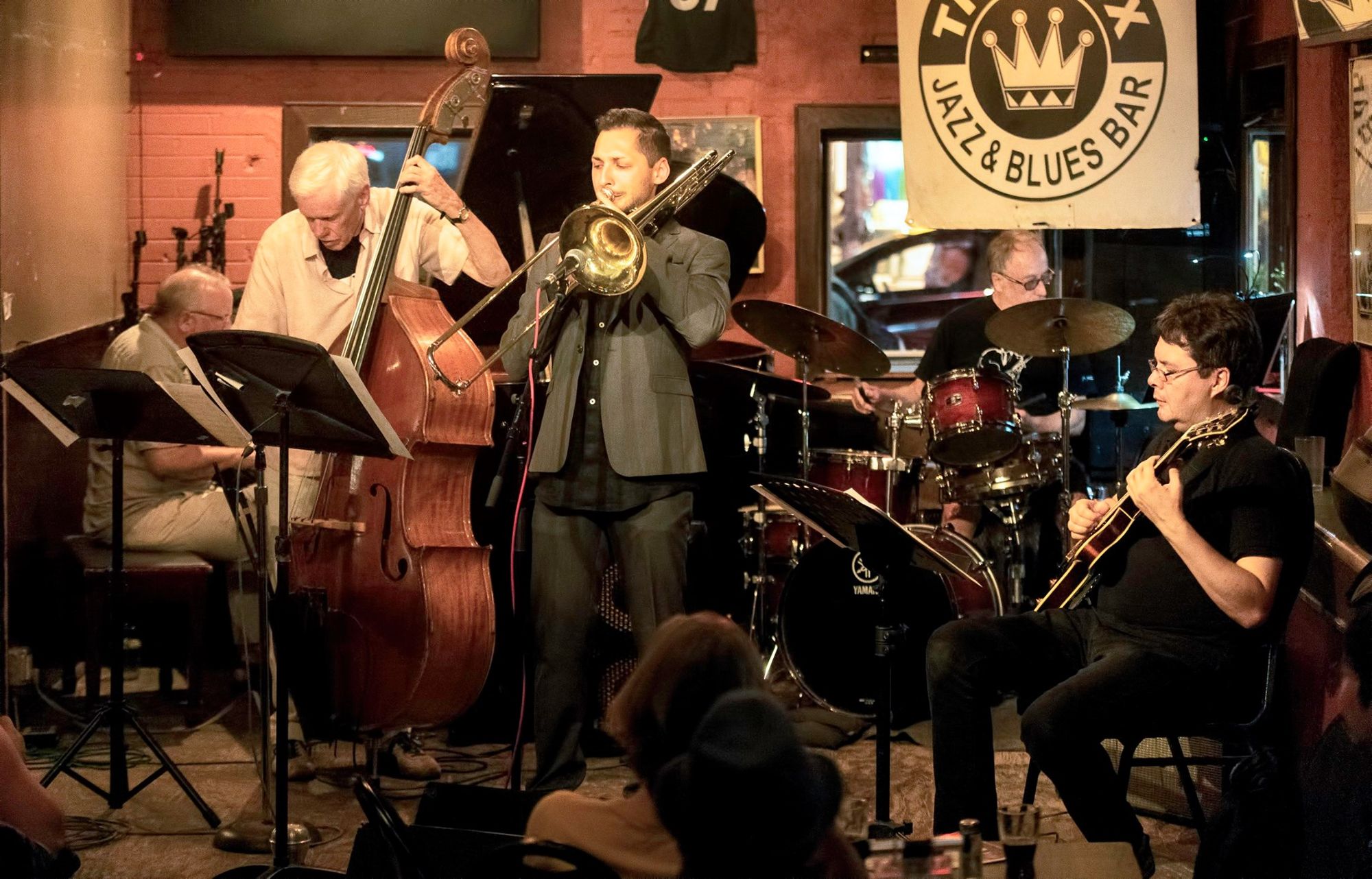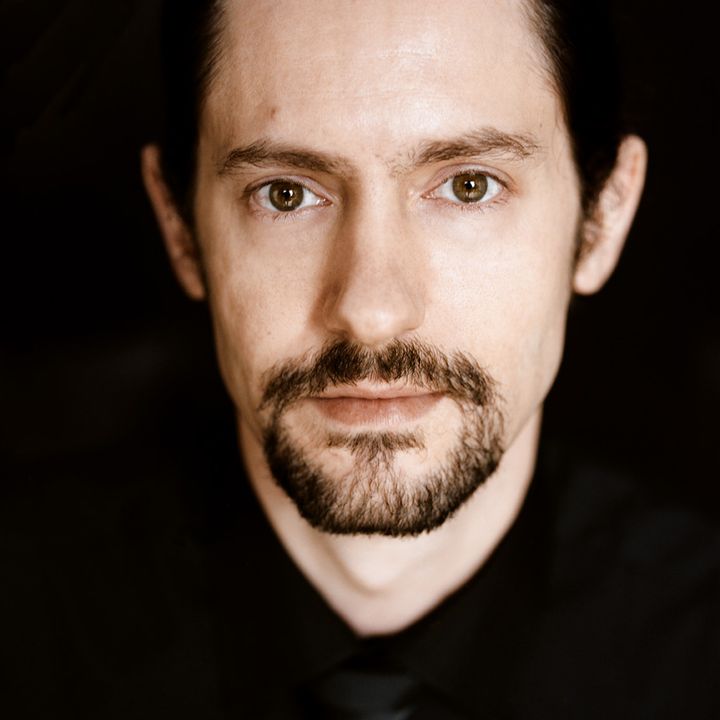Relearning your Instrument - how to play longer and healthier
By teaching brass players how to relearn their instruments, Paul helps other musicians to overcome obstacles and redefine their playing. From self-taught to studying at Juilliard.

By teaching brass players how to relearn their instruments, Paul helps other musicians to overcome obstacles and redefine their playing. From self-taught to studying at Juilliard, trombonist Paul Tarussov shares his unique journey to becoming a versatile musician. As a freelancer and educator, he's dedicated to mastering different genres and styles while keeping the trombone's unique sound.
Can you tell us a little bit about your background?
I've had a different path to music than a lot of people because I didn't have any musicians in my family and I didn't have any connections to the music world. I ended up playing a little bit in school and after I injured myself skiing, I started playing even more. One step after another led me down this path. Early on, it was always a question of catching up to other musicians who had training or who were younger than me - but I enjoyed this process, having to catching up and seeing where I can get. I ended up in music school. I studied at McGill University and then at the Juilliard school in New York. I was trained as a Jazz musician, so I will always have a passion for Jazz music.
I am now working as a freelancer and as an educator, and I’ve made it my mission to be as versatile as possible - to play different genres and styles. One reason for this is survivability, to have enough work to be able to do a variety of things. Another reason is the challenge of playing different styles (which I love), and trying to understand how to make my sound fit into different genres of music. I play Jazz, Funk, Rock, RnB, Persian music, Bluegrass, in Orchestras, Musical Theatre, Brass Quintet, Brass Ensembles - a lot of different stuff.
My instrument, the trombone, has a very particular, yet expected sound – so for me, it's a question of learning to reproduce this familiar sound while making it my own. Fortunately, many gigs and styles today do not come with a template of any sort, which gives the player freedom to create something unique. I think a lot of people are surprised and excited by how versatile the trombone can be. I've had composers and people in studios pay me to just sit down for a couple of hours to show them different things the instrument can do and what I can play.
As an educator. I do a fair bit of teaching (although a lot less since the pandemic). I love teaching brass technique, improvisation, songwriting, theory, composition - but also the physics and the learning process behind it all. My approach is to explain things to people in a different way that might connect to them better than traditional pedagogy.

Can you tell us what led you to your research and why you’re doing it?
It's a very personal journey for me. As I said, I did not have musical training early on, so I was self-taught. Also, there was a lot less information available back then without the internet as we now know it.
I was living in a tiny town of about five or six thousand people and I didn't have any other trombonists to talk to or learn from – I was making my own way.
Back then, there were things that I did really well, places where I made progress, but in terms of basic brass technique - I had no idea what I was doing. There were other weaknesses as well, a lot of gaps, things I didn't know or simply didn’t understand without training in the fundamentals. So later, when I started playing at a higher and higher level, I compensated for this with a lot of work and creativity.
But I ended up in New York, studying with some of the best trombonists of my generation - people like Michael Dease and Marshall Gilkes, and they were doing things that I could not do. So I started an exploratory process, trying to figure out what I was doing wrong or what I might do differently on the instrument. It led me to breaking down my playing completely and I ended up in this awkward place where I couldn't play the old way and I couldn't play the new way, either. It happens a lot to brass players when they run into difficulties and things don't work for them. It’s a classic situation. I couldn't play anymore. I couldn't work. I barely finished my degree, I had to turn down gigs, and for a few years, I was just pondering and struggling and not sure what to do. That's what led me to my research.
At first, I read many books and sought the advice of famous teachers - it was a whole process and I couldn't get answers to my questions. Surely there must be more to this. So I decided to go back to school and do research about the specific mechanics of brass playing - how they fundamentally work, what’s happening with the face when playing the instrument, what kind of problems do people have. In this process, I discovered a lot of things. Specifically, older ideas that had been discarded decades ago, but were actually on the right track for collecting the information I needed and making sense of my playing. Through these studies, I learned to play again and my “second career” started. This is what led to my passion for helping fellow brass players.
Now, I have a lot of people coming to me. I see different problems with different causes – and now, I’m able to help them, to rehabilitate them and guide them to better understand their playing. It's a very intellectual approach to teaching, but often, that's what is needed.
Would you be able to tell us a little bit more about the specific research that you're doing?
If you look back at the early twentieth century (World War Two era), up until the sixties, regimented and systematic approaches to understanding things were the norm. For example, one of the books I read as part of my research was called “A Scientific System for Cupped Brass Instruments.” It was supposed to be a manual for students to learn from. Then, you get into the sixties and seventies and things broaden up a little bit and people start thinking more holistically.
Along with freedom of the mind, human intuition became extremely important in the Hippie era. Take for example the famous book “The Inner Game of Tennis” which was quite influential for a lot of musicians at that time.
In most other fields, the holistic trends of the 60’s and 70’s eventually reversed themselves. Think of sports physiology and sports training, which has now reverted to the gritty, detailed technical approaches of older times. In the brass world, that shift back never happened. That’s not to say there were not some wonderful and very influential teachers who believed in the holistic approach. The main one being Arnold Jacobs, who developed this powerful pedagogy based on an intuitive approach to the instrument that was all about hearing the melody in your head, conceptualizing the right sound and focusing on the breathing. In fact, Arnold Jacobs’ pedagogy is sometimes called Song and Wind for this reason. I've benefited a lot from it myself, but it doesn’t delve into the specifics of brass playing and its mechanics. So, for a subset of players who connect with it and already have the right technical approach to the instrument, it’s fantastic, but there are many problems that you cannot solve by visualizing a beautiful melody or breathing better that have to do with technique.
That’s what my research is. I look at very specific little things, little movements, little adjustments - things that develop sound, power, and consistency – a range of concepts that brass players struggle with.
I started with the understanding that not all trombonists play the same way, which, even for teachers, can be a difficult concept to accept. It's just as true for me as anyone else. So when teachers are with their students and they try to get them to use the same playing techniques as them – it doesn’t always work. The reality is: there are a variety of ways you can play a brass instrument and you generally don’t get to choose which one you’re naturally comfortable with - it’s dictated for you by your anatomy and the instrument. It's very much like being left-handed or right-handed – imagine teaching someone to play tennis who is left-handed and you, as the teacher, have never met a left-handed player in your life.
Here’s another example. One of the most famous and widely used brass books is the “Arban's Famous Method for Trombone.” It’s considered the brass Bible by a lot of people and at its very front is a list of instructions on how to properly play the instrument. It says the mouthpiece must be placed one-third on the top lip and two thirds on the bottom lip – an asymmetrical placement where the mouthpiece is a little lower than the central line.
Though this is the brass Bible, if you do a quick Google image search or look at people that you play with, you will find there are very, very few brass players who actually do this. It's something like fifteen percent of the population, at most. Nobody notices this, it seems. So it's very, very important to identify the differences in technique from player to player and to consider this to teach effectively. And for me, doing this with myself is what led me to rebuild my playing and develop my current technical abilities. I had to make sense of and realize what I was struggling with before in order to be a functional brass player. It’s certainly a lot easier to play now that I’m aware of what I'm doing.
You can find out more about Paul here and here.
Want to book Paul to play a private or corporate event? See his GigLinked profile here.

This interview was conducted by James Dere of GigLinked. GigLinked facilitates live music bookings for musicians and their clients through their new marketplace platform at www.giglinked.live.
For interview inquiries, please email info@giglinked.live



